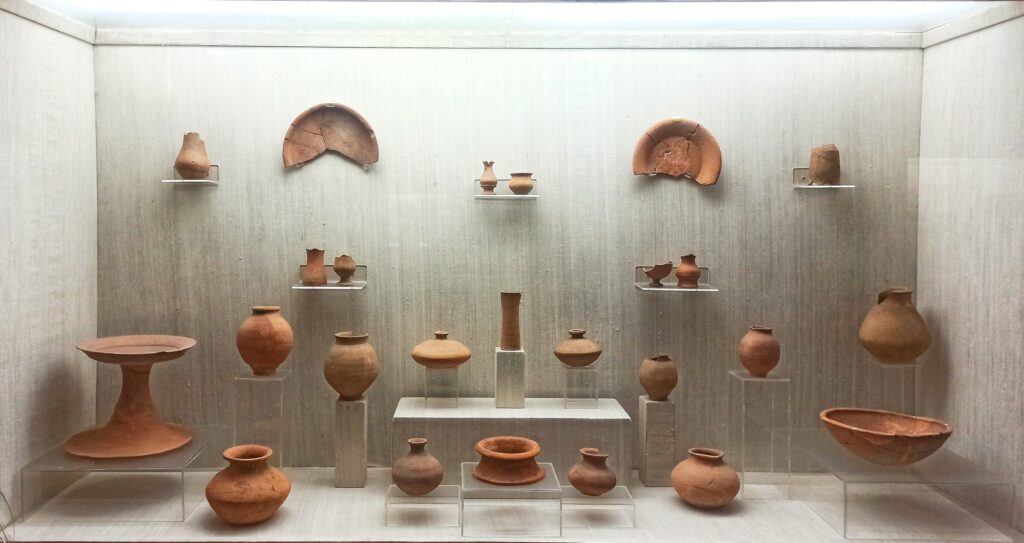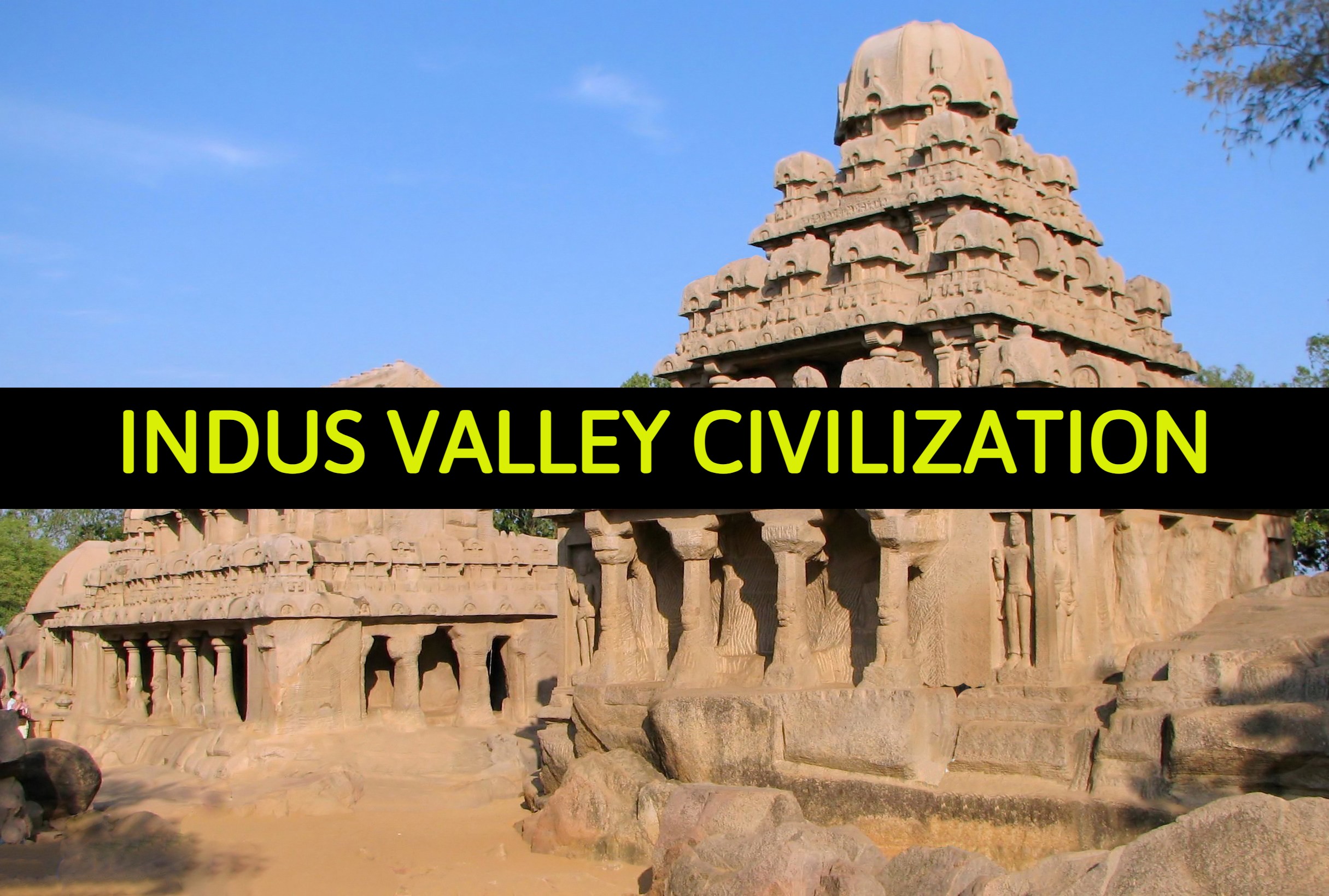Table of Contents
Discovery by James Lewis (1827-1829)

James Lewis, a soldier of the British East India Company, frustrated with the company’s behavior, decides to leave the army. After changing his name, he embarks on a journey across the Indian subcontinent. In 1829, on his travels, he stumbles upon the ancient city of Harappa, unaware of its significance. Driven by his passion for history, he meticulously documents the ruins he comes across, making notes and drawings to record his findings. Little does he know that he has accidentally discovered the ancient city of Harappa, paving the way for future archaeological explorations and the discovery of the Indus Valley Civilization.

John Marshall and ASI (1920s)


John Marshall, who took over as director of the Archaeological Survey of India (ASI) in the 1920s, is working with Indian archaeologists to carry out a thorough survey of Harappa. Through their efforts, they reveal the age of Harappa, which exceeds an impressive 5,000 years. During this period, the team also made the remarkable discovery of Mohenjo-Daro, located along the banks of the Indus River. These archaeological discoveries contribute significantly to our understanding of the ancient Indus Valley Civilization, shedding light on its historical depth and cultural richness.

Indus Valley Civilization (IVC)

Flourishing as the Bronze Age Civilization, approximately 4,000 years ago, the Indus Valley Civilization (IVC) covered the area of present-day Pakistan, Afghanistan, and northwestern India. It is recognized as one of the oldest civilizations and stands alongside the ancient cultures of Egypt and Mesopotamia. With its advanced urban planning, sophisticated structures and distinctive cultural features, the IVC plays a key role in the historical tapestry of human civilizations. As a beacon of early social development, it continues to captivate scholars and enthusiasts alike, offering invaluable insights into the complexities of ancient human existence.
Pre-Harappan Phase (7,000 BC to 5,500 BC)

The early phase of the Indus Valley Civilization unfolds with the uncovering of agricultural settlements characterized by basic tools and pottery. This foundational period lays the foundations for further advances that mark the initial steps on the journey of the Indus people. Around 5,500 BC, a transformational shift towards urbanization takes shape, representing a significant milestone in the development of civilization. During this pivotal era, the landscape is dotted with emerging public buildings and the establishment of trade routes, underscoring the dynamic progression from agrarian settlements to more complex, interconnected urban centers. This transition not only reflects the adaptive capacity of the Indus Valley Civilization, but also foreshadows the complex social structures and architectural achievements that defined this ancient culture.
Advanced Urban Planning

The Indus Valley Civilization (IVC) reached the zenith of its development and represents a remarkable advance in urban planning by 2600 BC. This period witnessed the emergence of intricately designed urban landscapes with multi-Storey brick houses. Notable features of this sophisticated urban infrastructure include the implementation of standardized measurements for bricks, a testament to their meticulous approach to construction. Cities boast thoughtful civic amenities, including toilets, swimming pools and efficient drainage systems that reflect an unrivaled level of civic planning. Proper road gutters improve the overall sanitation system, while the thoughtful incorporation of trees along sidewalks adds an element of greenery. Public wells serve as communal sources of water, exemplifying the IVC’s commitment to creating well-organized and livable urban environments and setting the benchmark for urban planning in ancient civilizations.
Harappan Language (Indus Script) Decoding Challenges

The mysterious Harappan language, preserved in the complex Indus script, still eludes decipherment. With the discovery of more than 4,000 artifacts, each decorated with more than 400 characters, attempts at decoding have proven challenging. Despite numerous efforts, the intricacies of this ancient script remain shrouded in mystery. However, remarkable patterns have emerged during these trials that provide exciting insights into the nature of the scenario. Observation reveals a unique right-to-left writing direction that sets it apart from more familiar writing systems. In addition, the fascinating connection with specific animal symbols adds an interesting layer to the complexity of the scenario. The mystery surrounding the Harappan language and its script fuels ongoing scholarly efforts as researchers try to uncover the linguistic secrets embedded in these ancient artifacts.
Logo syllabic Script

The enigmatic Indus script is widely believed to be logo syllabic, using symbols to represent whole words or individual sounds. This language characteristic distinguishes it from writing systems such as Egyptian hieroglyphs. While similarities exist, the absence of a linguistic Rosetta Stone equivalent for the Indus Script presents a unique challenge to decipherment. Unlike the fortunate discovery in Egypt, where the Rosetta Tablet made the hieroglyphs easier to understand by providing a parallel text in ancient Greek, scholars grappling with the Indus script lack such a crucial linguistic key. This absence adds to the complexity of decoding the script and delving into the rich linguistic heritage of the ancient Indus Valley Civilization.
Patterns and Symbols in Indus Script
Careful observations of the Indus script reveal distinctive patterns, including the repeated use of certain symbols and the consistent appearance of specific symbols at the end of written texts. Notably, the widespread occurrence of the Indus script in Mesopotamia involves complex trade networks and raises the intriguing possibility of shared linguistic elements between the two ancient cultures. The presence of the script in a Mesopotamian context suggests a mutual exchange of ideas, goods, and possibly a shared language, underscoring the interconnected nature of civilizations during this period. As scholars uncover these patterns, the cross-cultural implications of the Indus Script continue to deepen our understanding of the complex relationships that flourished among ancient societies.
City Structure
The cities of the Indus Valley Civilization (IVC) display a cohesive architectural pattern with the Lower Mountains enclosed by boundary walls and the Upper Mountains with citadels. This consistent arrangement is evident across the various urban centers and emphasizes the intentional planning that characterized the IVC. The lower mountains, protected by the surrounding walls, served as the basic areas of the cities. In contrast, the Upper Mounts, strategically located, housed basic structures such as citadels, symbolizing the central centers of civic life. Notable structures that exemplify advanced IVC engineering include the Great Baths at Mohenjo-Daro. This carefully designed and functional structure serves as a testament to the sophistication of the civilization’s urban planning, emphasizing communal and sanitary aspects in their thriving cities.
Absence of Religious Structures

Distinguishing itself from other contemporary civilizations, the Indus Valley Civilization (IVC) presents a unique aspect by exhibiting the absence of temples, mosques, or explicit religious structures in its archaeological remains. These characteristics challenge conventional views of social hierarchy prevalent in ancient societies. Unlike its counterparts, the IVC appears to have flourished without the prominent presence of religious buildings, suggesting a subtle social structure that did not center around religious institutions. This interesting departure from the norm leads scholars to reassess the role of religion and hierarchy within the IVC and opens avenues for alternative interpretations of the cultural dynamics that shaped this ancient civilization.
Decline and Disappearance (1900 BC – 1300 BC)

In a significant historical shift, the Indus Valley Civilization (IVC) undergoes a rapid and significant decline between 1900 BC and 1300 BC. During this period, the cities show obvious signs of neglect, indicating the gradual decline of their once thriving urban life. By 1800 BC, a tipping point is reached as most of the cities in the IVC are left abandoned, adding to the mystery surrounding this decline. The specific cause of this precipitous fall from prominence remains elusive and an enduring mystery to scholars and historians. The sudden cessation of planned urban activities and subsequent abandonment of settlements during this time frame underscores the complex factors at play, leaving modern observers with a compelling historical puzzle to fully unravel.
Theories on Decline
Several theories have been postulated to explain the decline of the Indus Valley Civilization (IVC) after 1900 BC. These hypotheses include various factors such as the potential drying up of the Saraswati River, widespread deforestation or the outbreak of a deadly disease. Each theory provides a different perspective on the circumstances leading to the downfall of this once prosperous civilization. The claim that the Saraswati River may have dried up suggests a significant environmental change affecting the region. At the same time, the deforestation theory assumes that the depletion of forests for various needs could have made the area uninhabitable. Moreover, the idea of a deadly disease spreading through the population introduces an element of biological crisis. The multiplicity of these theories reflects the complexity of the historical context and highlights the complex interplay of environmental, social and health factors that contribute to the mysterious decline of IVC.
Legacy

The mysterious Indus Valley Civilization, with a lifespan spanning thousands of years, faces an uncertain demise around 1300 BC. Despite its vast duration, civilization reaches a pivotal point marked by deep decline, leaving behind a series of mysteries that endure throughout the ages. Characterized by carefully planned cities, advanced infrastructure and intricate artefacts, the rich archaeological heritage of the Indus Valley continues to capture the imagination of historians and archaeologists. The unanswered questions surrounding the end of this ancient civilization serve as a constant source of intrigue, fueling ongoing scientific efforts to unravel the complexities of its ultimate fate and the factors contributing to its mysterious conclusion.

2 thoughts on “Indus Valley Civilization | Mystery | Everything you need to know | 2024”